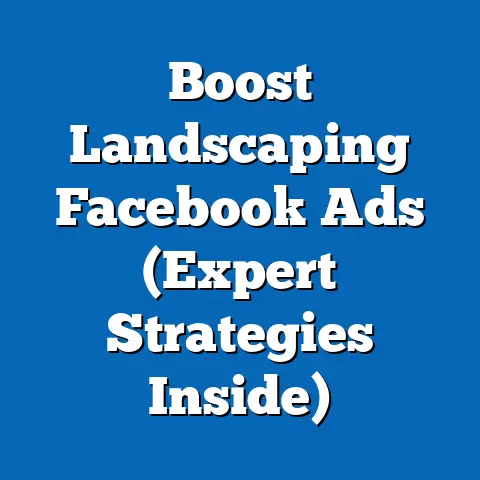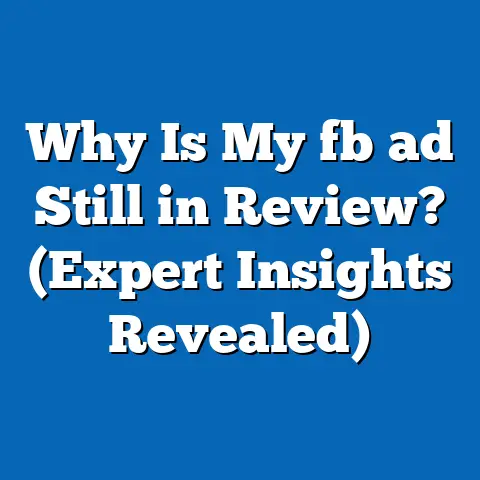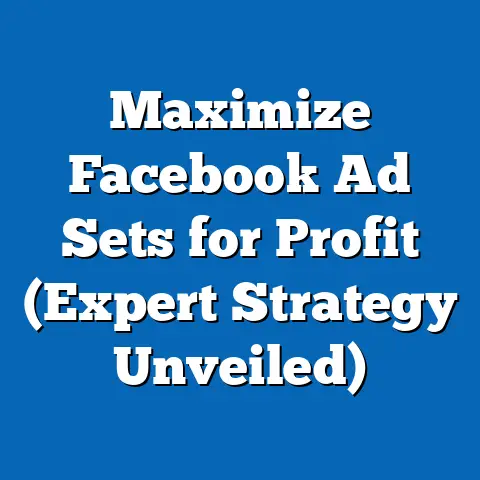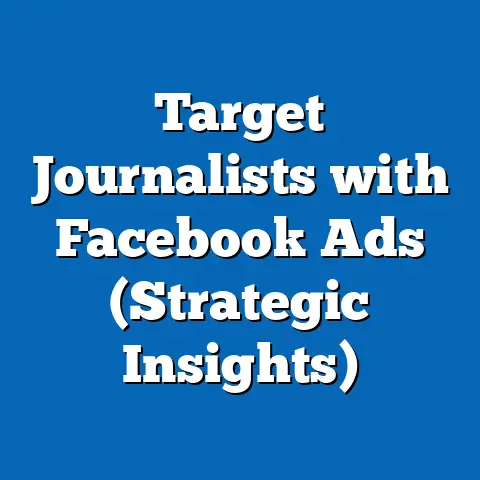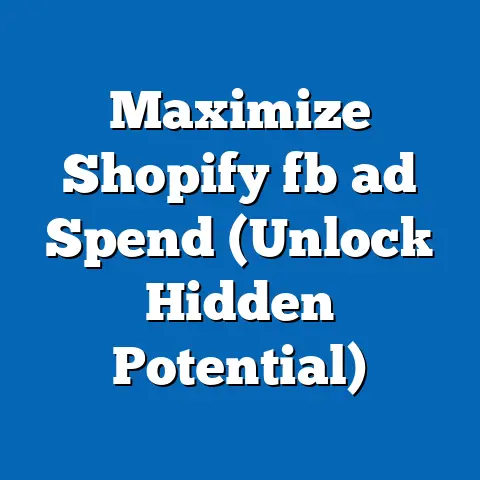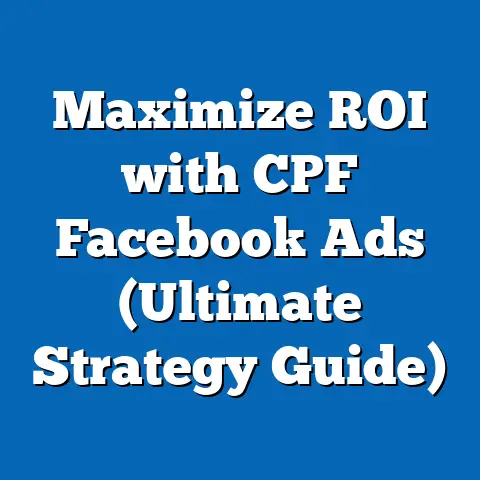Boost Reach by Transforming Facebook Emails (Pro Tips)
It’s no secret that businesses today are constantly battling for attention on Facebook. With algorithm changes seemingly designed to stifle organic reach and a never-ending stream of content vying for users’ eyeballs, it can feel like shouting into a hurricane. I’ve seen countless businesses struggle to connect with their audience, even those who have actively shown interest in their brand. They amass likes, follows, and even website visits from Facebook, but converting that interest into tangible engagement and sales feels like an uphill battle.
The truth is, relying solely on organic posts and hoping your audience sees them is a recipe for frustration. And while Facebook ads can be incredibly powerful, they shouldn’t be your only weapon. That’s where the often-overlooked power of Facebook emails comes in. I’m not talking about the generic notification emails Facebook sends out – I’m talking about strategically leveraging email communication as a way to nurture your audience, drive engagement, and ultimately, boost your reach on the platform. Think of it as a way to whisper directly into the ears of people who have already raised their hands and said, “Hey, I’m interested!” This article is my deep dive into how you can transform your Facebook email strategy into a reach-boosting powerhouse.
Understanding Facebook Emails
Before we dive into the pro tips, let’s clarify what I mean by “Facebook emails.” I’m not referring to email marketing on Facebook (although that’s a valid strategy too!). Instead, I’m talking about the potential within the emails related to Facebook activity.
Facebook, at its core, is a giant data engine. Every like, comment, share, click, and website visit tracked through the Facebook Pixel is a data point. And when someone interacts with your Facebook page or ads, they often become part of your email list – directly or indirectly.
What kinds of emails are we talking about?
- Lead Generation Form Submissions: If you’re running lead generation ads on Facebook, you’re collecting email addresses directly. These are gold!
- Website Opt-ins Triggered by Facebook Traffic: If someone clicks on your Facebook ad and lands on your website, where they then sign up for your newsletter, that’s a Facebook-influenced email.
- Customer Lists Uploaded to Facebook: You can upload your existing customer list to Facebook to create custom audiences for ad targeting. While you can’t directly email these people through Facebook, you can use their data to understand your ideal customer and craft more effective email campaigns.
- Facebook Page Followers: While you don’t directly get the email addresses of all your Facebook page followers (that would be a privacy nightmare!), you can use Facebook’s tools to understand their demographics, interests, and behaviors, which can inform your email marketing strategy.
Why does this matter?
Because these email addresses and the data associated with them represent a warm audience. These are people who have already expressed some level of interest in your brand, product, or service. They’re much more likely to engage with your email content and click through to your website or Facebook page than a cold audience.
The Proof is in the Numbers:
Numerous studies have shown the power of email marketing for driving engagement on social media. For example, a study by HubSpot found that email marketing has an average ROI of $42 for every $1 spent. That’s a staggering return! And when you combine the power of email with the targeted reach of Facebook, you can create a synergistic effect that amplifies your marketing results. I’ve personally seen clients double or even triple their website traffic from Facebook after implementing a strategic email marketing strategy.
Takeaway: Don’t underestimate the potential of your Facebook-related email lists. These are valuable assets that can help you boost your reach, drive engagement, and ultimately, grow your business.
Next Step: Start auditing your existing email lists and identifying the sources of those email addresses. How many came from Facebook lead generation ads? How many signed up for your newsletter after clicking on a Facebook ad? Understanding the origins of your email subscribers will help you segment your lists and tailor your messaging for maximum impact.
The Importance of Email Segmentation
Now that you understand the potential of your Facebook-related email lists, let’s talk about segmentation. I can’t stress this enough: sending the same generic email to everyone on your list is a recipe for low open rates, low click-through rates, and ultimately, unsubscribes. In today’s world of personalized marketing, people expect to receive messages that are relevant to their interests and needs.
What is Email Segmentation?
Email segmentation is the process of dividing your email list into smaller groups (segments) based on specific criteria. This allows you to send more targeted and personalized emails to each segment, increasing the likelihood of engagement.
Why is it so important for Facebook Marketing?
Because Facebook provides a wealth of data that you can use to segment your email lists. Think about it: Facebook knows your audience’s demographics, interests, behaviors, and even their purchase history (if they’ve made purchases through Facebook Shops or interacted with your ads). You can leverage this data to create incredibly targeted email segments.
Examples of Effective Segmentation Strategies:
- Demographics: Segment your list by age, gender, location, and other demographic factors. For example, you might send a different email to your male audience than your female audience, or you might promote a local event to subscribers who live in a specific city.
- Interests: Segment your list based on their interests, as indicated by their likes, follows, and group memberships on Facebook. For example, if you sell fitness products, you might send a different email to subscribers who are interested in yoga than subscribers who are interested in weightlifting.
- Behavior: Segment your list based on their behavior on Facebook and your website. For example, you might send a follow-up email to subscribers who clicked on a specific Facebook ad but didn’t make a purchase, or you might send a thank-you email to subscribers who recently liked your Facebook page.
- Purchase History: Segment your list based on their past purchases. For example, you might send a promotional email to subscribers who have purchased a specific product in the past, or you might send a discount code to subscribers who haven’t made a purchase in a while.
- Lead Magnet Download: If you offered a free ebook or guide in exchange for an email address through a Facebook ad, segment those subscribers separately. They opted in for a specific reason, so tailor your follow-up emails to that topic.
The Impact of Targeted Messaging:
I’ve seen firsthand the dramatic impact that targeted messaging can have on engagement rates. One client, a local restaurant, saw a 40% increase in email open rates and a 25% increase in click-through rates after implementing a segmentation strategy based on customer preferences (e.g., vegetarian, gluten-free). They were able to send more relevant and personalized emails to each segment, resulting in higher engagement and more restaurant reservations.
Takeaway: Email segmentation is a must-do for any business that wants to maximize the ROI of their Facebook marketing efforts. By leveraging the data available on Facebook, you can create incredibly targeted email segments and send more relevant and personalized messages to your audience.
Next Step: Start brainstorming ways to segment your email list based on the data you have available on Facebook. Consider your audience’s demographics, interests, behaviors, and purchase history. Then, create a plan for crafting targeted email messages for each segment.
Crafting Compelling Email Content
Okay, you’ve got your segmented email lists. Now what? The next crucial step is crafting email content that actually resonates with your audience. No matter how targeted your list is, if your emails are boring, irrelevant, or poorly written, they’ll end up in the trash bin.
Essential Elements of Effective Email Content:
- Engaging Subject Lines: Your subject line is the first (and sometimes only) impression you make on your subscribers. It needs to be attention-grabbing, intriguing, and relevant to the content of your email. Avoid generic subject lines like “Newsletter Update” or “Latest News.” Instead, try something more specific and compelling, such as “Unlock Exclusive Discounts on Our New Fitness Collection” or “The Secret to Achieving Your Weight Loss Goals.”
- Visually Appealing Layouts: In today’s visually driven world, people expect emails to be aesthetically pleasing. Use a clean and professional layout, high-quality images, and a consistent brand identity. Make sure your emails are mobile-friendly, as many people will be reading them on their smartphones.
- Strong Calls-to-Action (CTAs): Every email should have a clear call-to-action that tells your subscribers what you want them to do. Whether it’s clicking through to your website, making a purchase, or signing up for a webinar, make sure your CTA is prominent, easy to understand, and compelling. Use action-oriented language, such as “Shop Now,” “Learn More,” or “Register Today.”
- Valuable Content: Ultimately, the most important element of effective email content is value. Provide your subscribers with information, insights, or offers that they find useful and relevant. Don’t just bombard them with sales pitches. Instead, focus on building a relationship and providing value over time.
The Power of Storytelling:
I’m a huge believer in the power of storytelling in email marketing. People are naturally drawn to stories, and they’re more likely to connect with a brand that tells compelling stories. Share customer testimonials, behind-the-scenes glimpses of your business, or personal anecdotes that resonate with your audience.
For example, instead of simply listing the features of your new product, tell a story about how it helped a customer solve a problem or achieve a goal. This will make your product more relatable and memorable, and it will increase the likelihood that your subscribers will make a purchase.
A/B Testing for Optimal Performance:
Don’t just guess what kind of email content will resonate with your audience. Use A/B testing to experiment with different subject lines, layouts, CTAs, and content formats. A/B testing involves sending two different versions of your email to a small segment of your list and then analyzing the results to see which version performed better.
For example, you might test two different subject lines to see which one generates a higher open rate. Or you might test two different CTAs to see which one generates a higher click-through rate. A/B testing is a powerful tool for refining your email content and maximizing your ROI.
Takeaway: Crafting compelling email content is essential for engaging your audience and driving results. Focus on creating engaging subject lines, visually appealing layouts, strong CTAs, and valuable content. And don’t forget to use storytelling and A/B testing to optimize your email performance.
Next Step: Review your recent email campaigns and identify areas for improvement. Are your subject lines engaging enough? Are your layouts visually appealing? Are your CTAs clear and compelling? Then, create a plan for implementing these tips in your next email campaign.
Integrating Facebook Ads with Email Campaigns
This is where the magic truly happens. You’ve got your segmented email lists and your compelling email content. Now, let’s supercharge your efforts by integrating your Facebook ads with your email campaigns. This synergistic approach can dramatically boost your reach, drive engagement, and generate more leads and sales.
Retargeting Ads for Email Engagement:
One of the most effective ways to integrate Facebook ads with email campaigns is through retargeting. Retargeting involves showing ads to people who have already interacted with your email content. For example, you might show ads to people who opened your email but didn’t click through to your website, or you might show ads to people who clicked through to your website but didn’t make a purchase.
Retargeting ads are incredibly effective because they target people who are already familiar with your brand and have shown some level of interest in your products or services. This increases the likelihood that they’ll click on your ad and take the desired action.
Leveraging Custom Audiences and Lookalike Audiences:
Facebook’s Custom Audiences and Lookalike Audiences are powerful tools for targeting your ads to the right people. You can create a Custom Audience by uploading your email list to Facebook. This allows you to target your ads directly to your email subscribers.
You can also create a Lookalike Audience by telling Facebook to find people who are similar to your email subscribers. This allows you to expand your reach and target new people who are likely to be interested in your products or services.
Examples of Successful Integrated Campaigns:
I’ve seen numerous clients achieve significant results by integrating their Facebook ads with their email campaigns. One client, an e-commerce business, saw a 30% increase in sales after implementing a retargeting campaign that targeted people who had abandoned their shopping carts after clicking on a Facebook ad.
Another client, a real estate agent, generated a 50% increase in leads after creating a Lookalike Audience based on their email subscribers and targeting them with ads promoting their listings.
Takeaway: Integrating Facebook ads with email campaigns is a powerful strategy for boosting your reach, driving engagement, and generating more leads and sales. Use retargeting ads to follow up with people who have interacted with your email content, and leverage Custom Audiences and Lookalike Audiences to target your ads to the right people.
Next Step: Create a plan for integrating your Facebook ads with your email campaigns. Consider using retargeting ads to follow up with people who have interacted with your email content, and leverage Custom Audiences and Lookalike Audiences to target your ads to the right people.
Conclusion
Transforming your Facebook emails into a proactive tool for reaching and engaging audiences is a game-changer for any business that wants to succeed on the platform. By understanding the potential of your Facebook-related email lists, segmenting your lists for targeted messaging, crafting compelling email content, and integrating your Facebook ads with your email campaigns, you can significantly enhance your marketing efforts and achieve tangible results.
I’ve shared some powerful pro tips in this article, and I encourage you to take actionable steps toward implementing them in your Facebook marketing strategy. The results can be truly transformative. It’s not just about sending emails; it’s about building relationships, providing value, and creating a synergistic effect between your email and Facebook marketing efforts.
Call to Action:
I’d love to hear about your experiences with Facebook email strategies. What’s worked for you? What challenges have you faced? Share your thoughts and questions in the comments section below. Let’s start a conversation and learn from each other!

